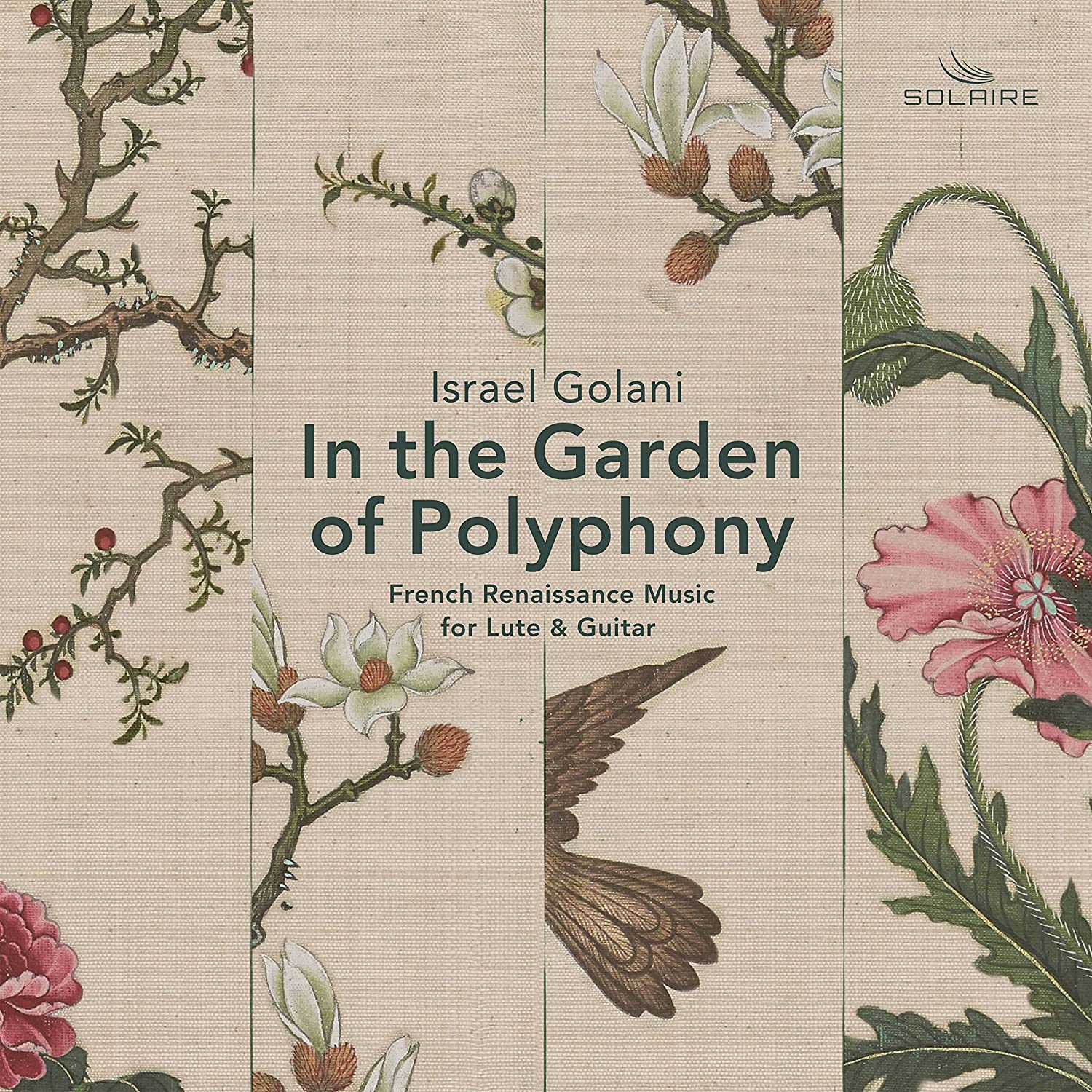French Renaissance Music for Lute and Guitar
Israel Golani (Renaissance lute and Renaissance guitar)
68:00
Solaire Records SOL 1010
Israel Golani’s CD is an anthology of French music from the 16th century for lute and for guitar. His gut-strung 6-course lute built by Martin Shepherd has a lovely sound quality, particularly in the treble; as was customary for 6-course lutes it has a high octave string on the fourth course. Golani also plays a similar lute built by Alfonso Marin, which sounds a semitone lower, and has no high octave string on the fourth course – fewer treble notes, but clearer for polyphony. The guitar pieces are played on a 4-course renaissance guitar also built by Alfonso Marin.
Golani begins with Albert de Rippe’s intabulation of Pierre Sandrin’s “Pleurez mes yeux”. De Rippe tracks Sandrin’s chanson closely, but with the addition of flowing divisions, mainly quavers. Golani’s playing is clear with nicely shaped melodic lines. I do like the way he plays cadential semiquavers in this piece – neat, in time, and without interrupting the flow. Some of De Rippe’s accidentals are surprising. The piece is essentially in F major, but De Rippe adds sharps to the f’s in the second bar; they would not have been sung in Sandrin’s original, but they are effective on the lute. Surprising harmonies also appear in De Rippe’s lengthy Fantasie quatriesme. His intabulation of “Un jour le temps” is given an unhurried, sensitive interpretation.
Golani includes pieces from the first two books of lute tablature to be printed in France: Pierre Attaingnant’s Tres breve et familiere introduction (Paris, 1529) and Dixhuit basses dances (Paris, 1530). Track 7 is an intabulation of the tender chanson for three-voices, “Fortune laisse moy”. It is a lovely piece of music played well, so it is a pity there is a wrong note – 18 notes from the end – where Golani plays f’ instead of b’ flat. The note is b’ flat in Attaingnant’s original and in Daniel Heartz’ edition, so I guess Golani made his own copy, and accidentally wrote tablature d on the wrong line. The Branle gay “C’est mon amy” whizzes along at a gay speed. Basse dance “Beure frais” lacks its Tourdion, which would have added a refreshing change from C minor to C major. Golani opts for a nice slow tempo for a gentle “Dolent départ”, but succumbs to adding erratic touches of rubato. Playing out of time does not necessarily make a piece more expressive. As with the music of Albert De Rippe, there are some surprising accidentals, including a false relation involving e’ natural and e flat. It might have lost a mark in an ‘O’ Level exam, but such clashes add a certain expressive piquancy, especially when played on a lute. For “Amy souffrez” Golani turns to a manuscript source, Öffentliche Bibliothek der Universität Basel Musiksammlung, Ms. F IX 56, which has more divisions and unexpected accidentals than Attaingnant’s more familiar printed source.
One of the pieces published in Louvain by Pierre Phalèse is Allemande (track 4), which also appears in various guises in non-French sources, including the Willoughby MS, where it has the title “Grenes Alman”. The Willoughby divisions are twice the speed of Phalèse’s fast notes, which makes me wonder if Golani’s interpretation is a bit on the fast side. At any event I would have preferred the rallentando to occur after (not during) the divisions over the dominant of the final cadence.
The 4-course guitar was popular in 16th-century France. Nine different collections were printed in the 1550s, and another printed in 1570 survives. Golani plays six pieces from these guitar books together with his own intabulation of the basse dance “Auprès de vous” from Attaingnant’s Second Livre (1547). The texture is inevitably thin, and all four voices cannot be sustained. However, it is a nice arrangement, and Golani captures the essence of the piece in a tasteful way.
There is much variety in Golani’s collection, which includes lute music by Adrian Le Roy, Guillaume Morlaye, Jean-Paul Paladin, and Julien Bellin. It ranges from Morlaye’s catchy little Gaillarde with a plethora of bluesy flattened sevenths, to Bellin’s strict three-part counterpoint in his Trio. Golandi plays the Trio twice, the second time with his own divisions added. I like what he does – sometimes the extra notes simply fill gaps between notes a third apart, but other times he is more adventurous, for example with some nice jazzy syncopation introduced towards the end. The CD ends where it began, with an intabulation of Sandrin’s “Pleurez mes yeux”, this time in a setting by Guillaume Morlaye for 4-course guitar. Never mind that harmless wrong note in Track 7 mentioned earlier. Golani’s performance is really excellent, and makes for a most enjoyable CD.
Stewart McCoy
Categories
In the Garden of Polyphony
